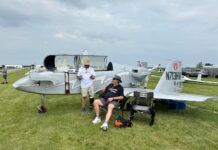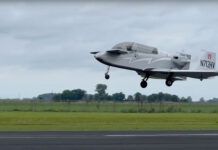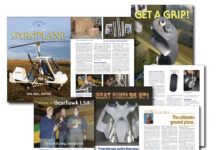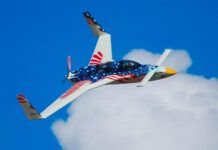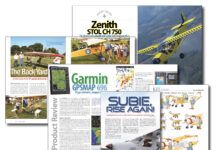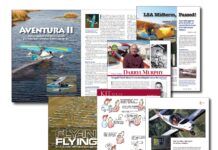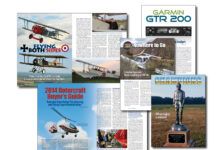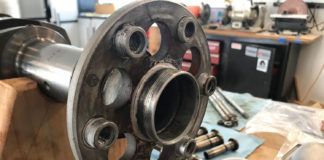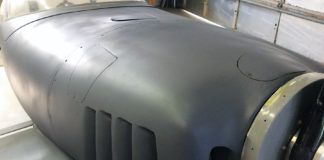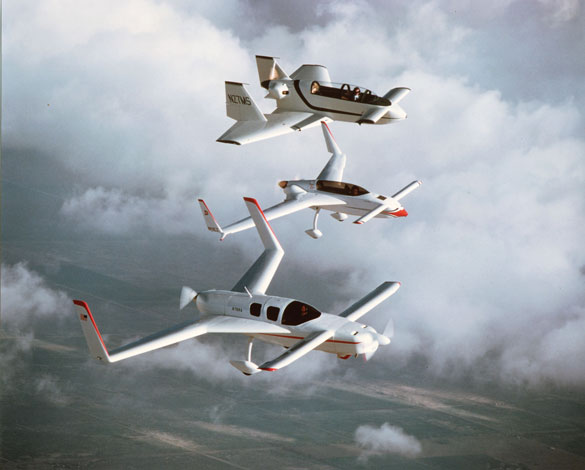

Houston, we have a problem, Burt Rutan starts a recent keynote speech. Unless guys like me go out and do this [space tourism], it will not get done. The audience laughs, but they are a sophisticated bunch, and they know that the man in front of them is responsible for so much change in the aerospace world of today that the only reasonable thing to do is to listen and believe both that Rutan is right. And, moreover, that in this case, he is right for the job of making our dreams of private and commercial space travel a reality.
A Unique Vision
In the course of four decades working in aerospace, aircraft designer and U.S. Air Force-trained flying qualities expert Rutan has changed the way we look at aircraft and the tasks these machines perform. In the process, he has inspired a whole segment of the Experimental/Amateur-Built aircraft industry to design clean, sleek and unique aircraft from composite materials that can be shaped into complex and extremely efficient shapes-shapes that fly.
Rutan knew from his work as a flight test engineer at Edwards Air Force Base that fine flying aircraft came in many different shapes. After all, he wrote MIL 83-691, which was the Air Forces spec for testing stall and spin in all types of airplanes. He was credited with fixing an F-4 in-flight instability characteristic and for devising a spin recovery procedure that made the airplane safer.
From the first stroke of his pen, he wanted to design safe aircraft. The lifting-canard wing concept relies on the premise that a properly designed canard (forward wing) will always stall first, pitching the nose of the aircraft down and preventing the main wing, the primary lifting surface, from ever stalling. This does work when the canard is designed and installed properly.
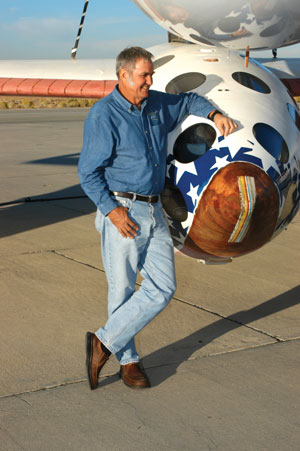
Understanding a Rutan-designed or even a Rutan-inspired aircraft is never a simple thing. They are not necessarily symmetrical. Some of them, parked, appear not to have enough landing gear to move! The propeller pushes them along, and there’s really no conventional tail to speak of. A few of these designs bear a vague resemblance to some kind of flying wing or pterodactyl. Center of gravity in Rutans canard designs can be an issue, because the main wing of an aircraft equipped with a lifting canard is generally aft of the CG, as is the engine and propeller. And the size, shape and dihedral of a lifting canard is extremely critical: The builder who toys with the plans is liable to discover that his final product does not fly like a Rutan design, if it flies at all.
As someone who grew up building models, Rutan also understood what tools and materials homebuilders were likely to have at their disposal for constructing a full-size aircraft. He was an early adopter of a composite layup method that eschewed molds. As composite materials have matured, Rutans designs have been created out of stronger and lighter materials, and this only increases their efficiency. Engine technology has also changed, and these designs are flexible enough to stay viable.
A short stint at the Bede Aircraft Factory helped Rutan formulate some of his thoughts about aircraft design for homebuilders, and in June 1974 he founded the Rutan Aircraft Factory (RAF) to develop light aircraft, and to market technical and educational documents on aviation. Scaled Composites, the more famous company he founded and at which he still holds the title of chief technical officer, came later.
Many say Rutan’s first design for homebuilders, the VariViggen, was inspired by a Swedish Fighter; it took Rutan four years to build. It was rapidly replaced by the VariEze, introduced in 1975. This airplane still holds the CAFE all-time record for the most efficient aircraft (set by Gary Herzler). The VariEze was so popular that Rutan agreed to kit the aircraft to make it easier to build, and by 1980 as many as 2000 were under construction, though its difficult to say how many have been finished and flown.
The VariEze morphed into the champion for range, the Long-EZ, which was designed for long-distance travel, then the Quickie, and the twin Defiant, and, well, you know where its gone from there. (Ever take a hard look at the Predator UAV drone? Thats a Rutan, too.)
Imitation Is Flattering
His airplanes inspired other kit-aircraft designers to experiment, giving rise to Nat Puffers Cozy, the Berkut, the SQ-2000, the Stagger-Eze the Velocity and the IBIS, to name just a few. Within 15 years of his first design Rutan watched, with some disappointment, as Beechcraft made changes to his specifications and then flew his first corporate twin-turboprop, the Starship, a dud. An Italian company, Piaggio, would take the best of what Beechcraft learned with the Starship program and apply it to a truly successful canard turboprop, the Piaggio Avanti. His more recent certified aircraft work includes the futuristic Adam 500 airframe design, which shared a centerline-thrust powerplant theme with his Defiant. Though Rutan still flies his own Starship as a personal aircraft, Beechcraft has bought back nearly every Starship airframe it ever built, and destroyed them.
Failure, however, helps to define success, and few would deny that Rutan has designed some highly mission-specific aircraft that have succeeded-and then some. Voyagers record-setting nine-day odyssey around the world without refueling (flown by Rutan’s brother Dick and friend Jeana Yeager), has yet to be superseded. Global Flyer, essentially a jet version of Voyager, carried Steve Fossett to a world record for flight distance without refueling. White Knight One and now, White Knight Two, are carrying Rutan’s vision higher and farther than most of us have dared to dream.
Good thing Rutan is resigned to his fate, to be the guy who goes out there and gets the job done. Without him, we might still be wondering whats possible. With him, we know that whatever the solution, it is going to be great.


